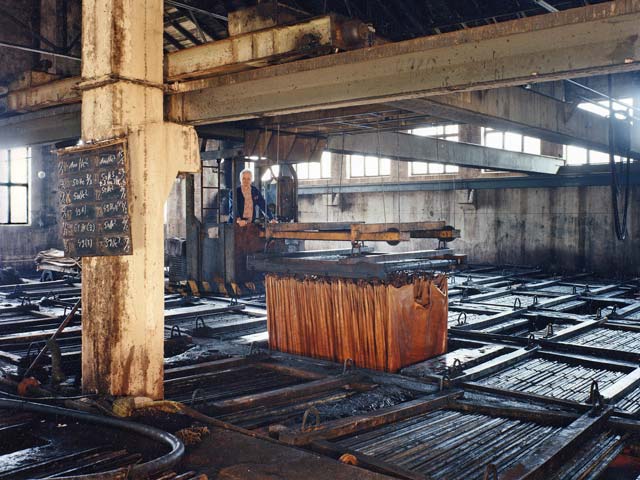Fact Check
What Is Used to Tan Leather?
Tanning is an essential part in the creation of leather goods.
For centuries, this process has been used in making leather what it is.
Though certain modernized techniques have been implemented to streamline and improve the process, it’s still a crucial step in manufacturing the fabric.
But what is tanning, and how is it done?
What’s actually used to tan a piece of leather?
Let’s take a closer look at the process of tanning, the materials involved, and what goes on during tanning to answer these and other questions.
What is Tanning?
Tanning is a chemical process by which animal hide is transformed into leather.
This chemical reaction changes the structure and composition of proteins within the animal hide, making it so the completed material won’t easily rot or otherwise decompose while improving the durability and strength of the finished fabric.
There are many different methods of tanning with different chemicals and techniques used to produce finished leather, as well as a lengthy prep process to ready the animal skins for tanning.
Preparation Process for Tanning
The preparation process to ready animal hide for tanning is generally consistent no matter what method of tanning is actually used, and is followed in a consistent order each time.
Soaking
First, animal hide is soaked in water for six hours up to two days.
This has the two major goals of removing any salt left over from when the skins were cured after being removed from the animal as well as saturating the hide to help facilitate further treatment.
Clean water is used, often supplemented with various antibacterial and antifungal solutions to prevent the hides from rotting or spreading disease during their soak.
Liming
Second, after the hide has been given ample time to absorb moisture, they enter a stage of the process known as liming. They’re transferred to a solution of milk of lime (calcium hydroxide, a base) to help soften and breakdown the hide.
This process usually involves loosening or removing hair from the outside of the hide, breaking down some of the proteins within it, removing natural fats and grease stored on or inside it, and prepping the collagen for treatment.
It also serves to swell and split the hide fibers to the extent desired by the tanners, making the finished leather softer and more plush.
Next, the hide is taken from the milk of lime into a basic solution to help even out the pH of the treated hide. Additionally, this process further loosens the hair attached to the surface, which is first removed by machines and followed by manual removal with a knife in a process known as scudding, leaving the hide’s surface smooth and hairless.
Deliming and Baiting
After that, the hides are further treated by bases in the deliming stage. Once brought to a more neutral pH level, the hides will be able to accept chemical enzymes.
Deliming is sometimes followed by bating, which is the use of enzymes specifically designed to help soften the hides, though this is usually reserved for leather intended to be made into clothing.
Once deliming and baiting have completed, the hides are pickled with the addition of salt. If the hides are planned to undergo mineral tanning (which we’ll cover in more detail shortly), they’ll also be treated with sulfuric acid to lower the hide’s pH to the point of acidity.
This lets the minerals used in tanning work more effectively during the actual tanning process.
Tanning
Following the extensive preparation of the hide, tanning can finally begin.
There are many different ways to tan a hide, some of which we’ll cover here while explaining the different benefits of each.
Mineral Tanning
Mineral tanning, also known as chrome tanning after the mineral used, is one of the two most common forms of tanning used today and is considered the easiest way to tan hide.
Chromium sulfate is dissolved into the hide fibers, penetrating the collagen and starting the chemical reactions necessary to create leather. As a result of the minerals used, raw hide in the process of tanning often takes on a bluish hue and is referred to as “wet blue” hide.
In order for hide to be mineral tanned, it must have a high pH level as a result of the pickling process.
After the proper level of chromium penetration is reached within the hide, bases are added to slightly raise the pH while temperature increases gradually, helping to facilitate the reactions that create leather.
Once completed, you’ll be left with a flexible and shrink-resistant piece of leather perfect for making clothes.
While chromium is the most common mineral used for mineral tanning, others like titanium, iron salts, zirconium, and alum are also utilized for some tanning processes.
When these minerals are used, the treated hide takes on a white appearance rather than blue, leading to the name of “wet white”. Though it is generally considered more environmentally friendly, wet white hides are more susceptible to shrinkage compared to wet blue hides.
Vegetable Tanning
Vegetable tanning is the other common tanning process of the modern era, second only to mineral tanning in industrial use.
Using tannins, a natural chemical produced by various types of leaves and bark, the proteins contained within the collagen in the hide are bound together and coated with the chemicals, producing a more water and bacteria-resistant hide.
The weeks-long process of stretching and applying tannins helps to add flexibility and stretchiness to the hide and resulting leather, though they are typically not as flexible as leather produced by mineral tanning, typically resulting in their use in luggage, belts, or shoes rather than clothing.
Natural Tanning
Though not commonly utilized in manufacturing for a host of reasons, tanning can be done naturally without the use of mineral solutions or plant tannins.
Bogs are highly acidic sources of standing water that lack oxygen and maintain low temperatures, making them perfect for naturally tanning things.
However, bogs are rarely used for tanning hide, with any tanning they are responsible for being observed on human cadavers that had fallen into the water, the conditions within the bog preserving them in a unique way which some have taken to calling “bog mummification”.
In Conclusion
Whether it be with minerals, vegetables, or a peat bog, leather goods that complete the tanning process will undergo various finishing products to help them attain the durability and beauty we’ve come to know and love.
Each process has its own advantages and disadvantages, meaning the process a tanner uses will mostly depend on what kind of leather goods they intend to produce.


